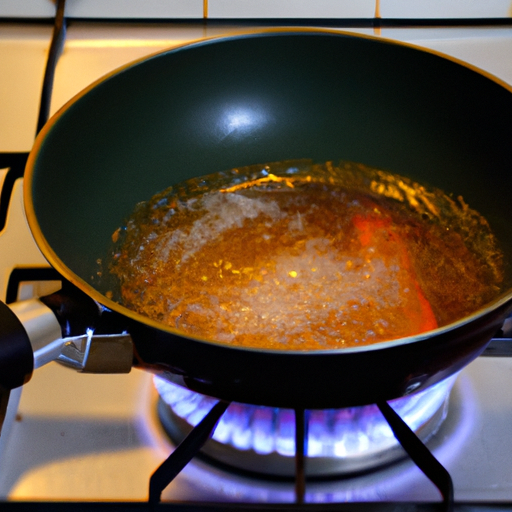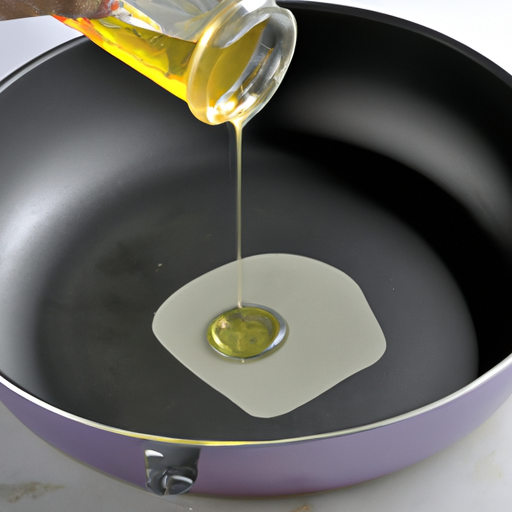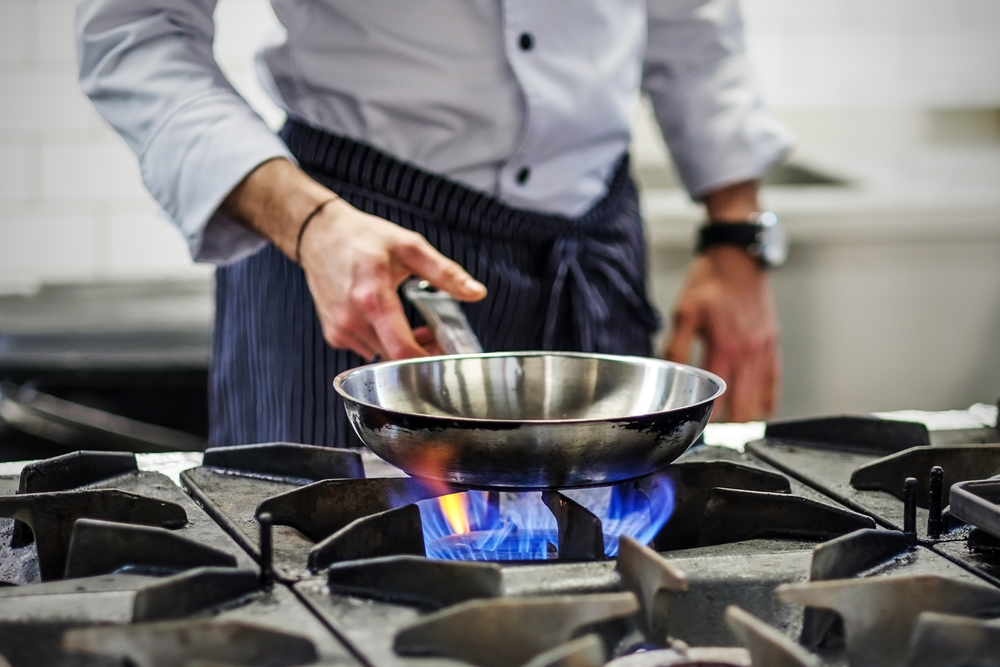Last Updated on February 6, 2023
Cooking can be a tricky business, especially when it comes to understanding the temperature of your cooking utensils. Have you ever wondered how hot does a frying pan get? You might not think much about this question but having an understanding of what temperatures are safe and effective for cooking is essential if you want to create delicious meals. In this blog post, we’ll discuss the heat generated by a typical frying pan and give some tips on how to keep it cool while still getting great results in your kitchen. So let’s find out!
Table of Contents:
- How Hot Does a Frying Pan Get?
- What Temperature Should I Cook At?
- Tips for Keeping Your Frying Pan Cool
- Conclusion
How Hot Does a Frying Pan Get?
When it comes to cooking, the temperature of your frying pan is one of the most important factors. The right temperature can make all the difference between a delicious meal and an overcooked disaster. But how hot does a frying pan get?
The answer depends on several factors, including the type of material used in its construction. Stainless steel or cast iron skillet will heat up faster than other materials like aluminium or copper, but they also retain heat longer. In general, you should expect temperatures ranging from 250°F (121°C) to 500°F (260°C).
To measure the temperature accurately, you’ll need an infrared thermometer or surface thermometer that can detect temperatures as low as -58°F (-50°C). This device will allow you to monitor your frying pan’s temperature without having to guess by touch.

It’s important not to let your frying pan get too hot when cooking because this could lead to burning food and even start a fire if left unattended for too long. To prevent this from happening, use medium-high heat settings and keep an eye on your thermometer readings at all times. If it starts getting close to 500°F (260°C), turn down the heat immediately.
If you’re looking for ways to keep your frying pan cool while cooking at high temperatures, there are several options available such as using oil instead of butter or adding cold ingredients like vegetables into already heated pans before turning up the heat again. Additionally, avoid overcrowding by leaving plenty of space between each piece of food so that they don’t stick together and cause hotspots in certain areas where temperatures can quickly rise above 500°F (260°C). Finally, never leave a hot skillet unattended – it is important to monitor the temperature at all times.
Knowing the maximum temperature your frying pan can reach is important for successful cooking. In the next section, we’ll discuss what temperature you should be cooking in order to get the best results.
What Temperature Should I Cook At?
Cooking on a stovetop can be intimidating, especially if you’re new to it. But with the right temperature settings and preheating techniques, you can make delicious meals in no time.
First off, let’s talk about heat settings. Most stoves have three main settings: low, medium-low and medium-high. Low is best for simmering sauces or keeping food warm; medium-low is good for sautéing vegetables; and medium-high is ideal for searing meats or boiling water quickly. If your stove has an adjustable knob that goes from 1 to 10 (or higher), then each number usually corresponds to one of these three temperatures.
It’s also important to preheat your pan before adding any ingredients. This helps ensure even cooking and prevents sticking—especially when using nonstick cookware. To do this, simply turn the heat up until it reaches the desired setting (e.g., “medium-high”) and wait until the pan starts giving off a faint wisp of smoke before adding anything else to it.
Once your pan is hot enough, there are several ways to tell whether or not it has reached its optimal temperature: You can sprinkle some drops of water onto the surface—if they sizzle immediately upon contact then you know it’s ready; alternatively, if you have a thermometer handy then insert it into the centre of the pan—the reading should reach at least 325°F/165°C before beginning cooking operations.
So remember:
Always use appropriate heat settings according to what type of food you’re preparing; always preheat your pans beforehand; and use either visual cues or thermometers to determine when they’ve reached their optimal temperature range. With these tips in mind, happy cooking.
Cooking at the right temperature is essential for achieving delicious results. To ensure your frying pan doesn’t get too hot, follow these tips in the next section.
Tips for Keeping Your Frying Pan Cool
Cooking with a frying pan is an essential part of many meals, but it can be tricky to get the temperature just right. If you’re not careful, your food can end up overcooked or burnt. One way to avoid this is by using a lower heat setting when cooking in your frying pan. This will help ensure that the temperature doesn’t rise too quickly and cause burning or sticking.

Another tip for keeping your frying pan cool while cooking is to add oil before adding food. Adding oil helps keep the surface of the pan from getting too hot and prevents sticking and burning. It also adds flavour to whatever you are cooking. Just make sure not to use too much oil as this can lead to greasy dishes.
Once you’ve finished cooking, it’s important to let your frying pan cool down before washing it and storing it away. Not only does this prevent any potential burns from handling a hot piece of cookware, but cooling off allows time for any stuck-on bits of food or grease on the bottom of the pan to loosen up so they come off more easily during cleaning time.
Finally, if you want extra protection against overheating while cooking in your frying pan, consider investing in one with a non-stick coating such as Teflon or ceramic-coated pans which have been designed specifically for this purpose. They provide an additional layer between the heat source and what you are actually cooking, thus helping to prevent burning and sticking.
Conclusion
In conclusion, it’s important to know how hot a frying pan can get and what temperature you should cook at. Keeping your frying pan cool is also essential for safe cooking. So next time you’re wondering “how hot does a frying pan get?” remember that the answer depends on the type of material used in its construction and the temperature setting you choose when cooking.
Paul is the type of person who never met a problem he couldn’t fix. He can always be found tinkering with something in his house, even if it isn’t broken! His tips and tricks are often shared on our site. He’s the one you call when something breaks because he has been known to improvise fixes for everything from leaky faucets to malfunctioning dryers.

